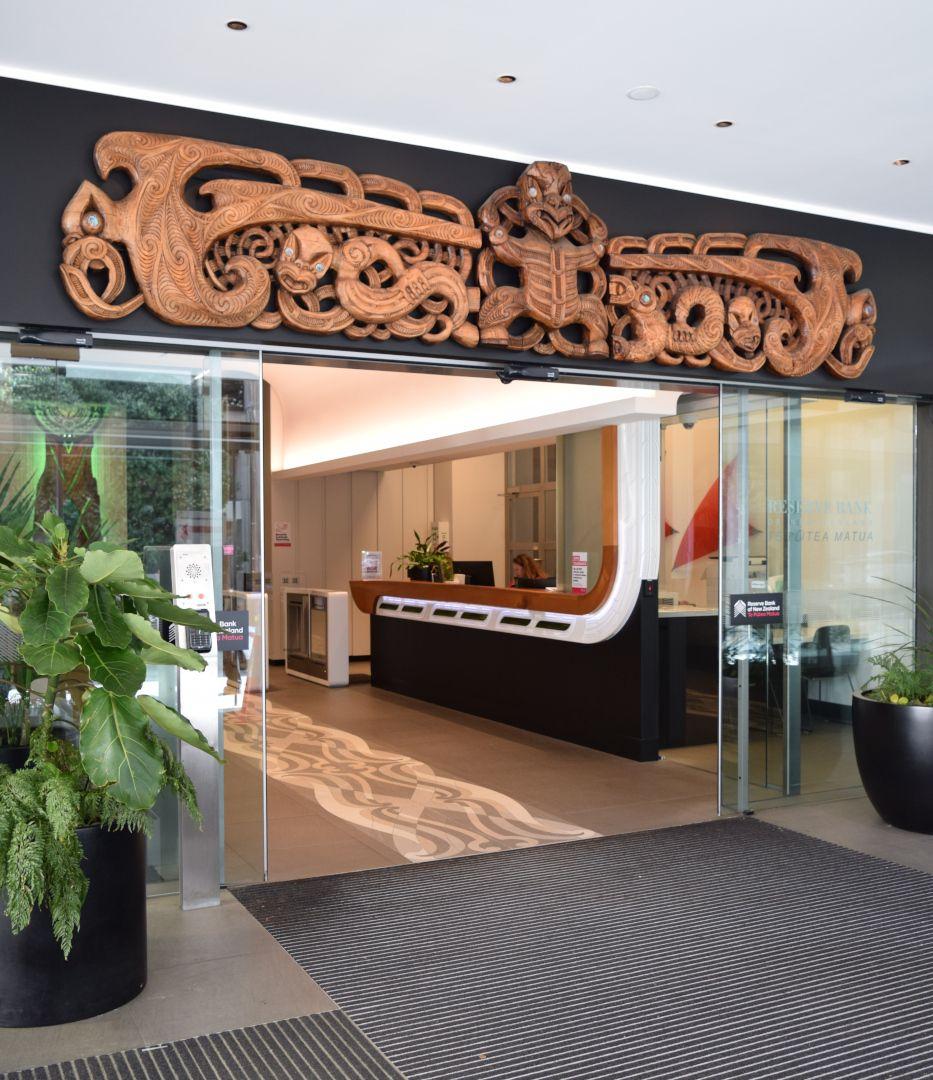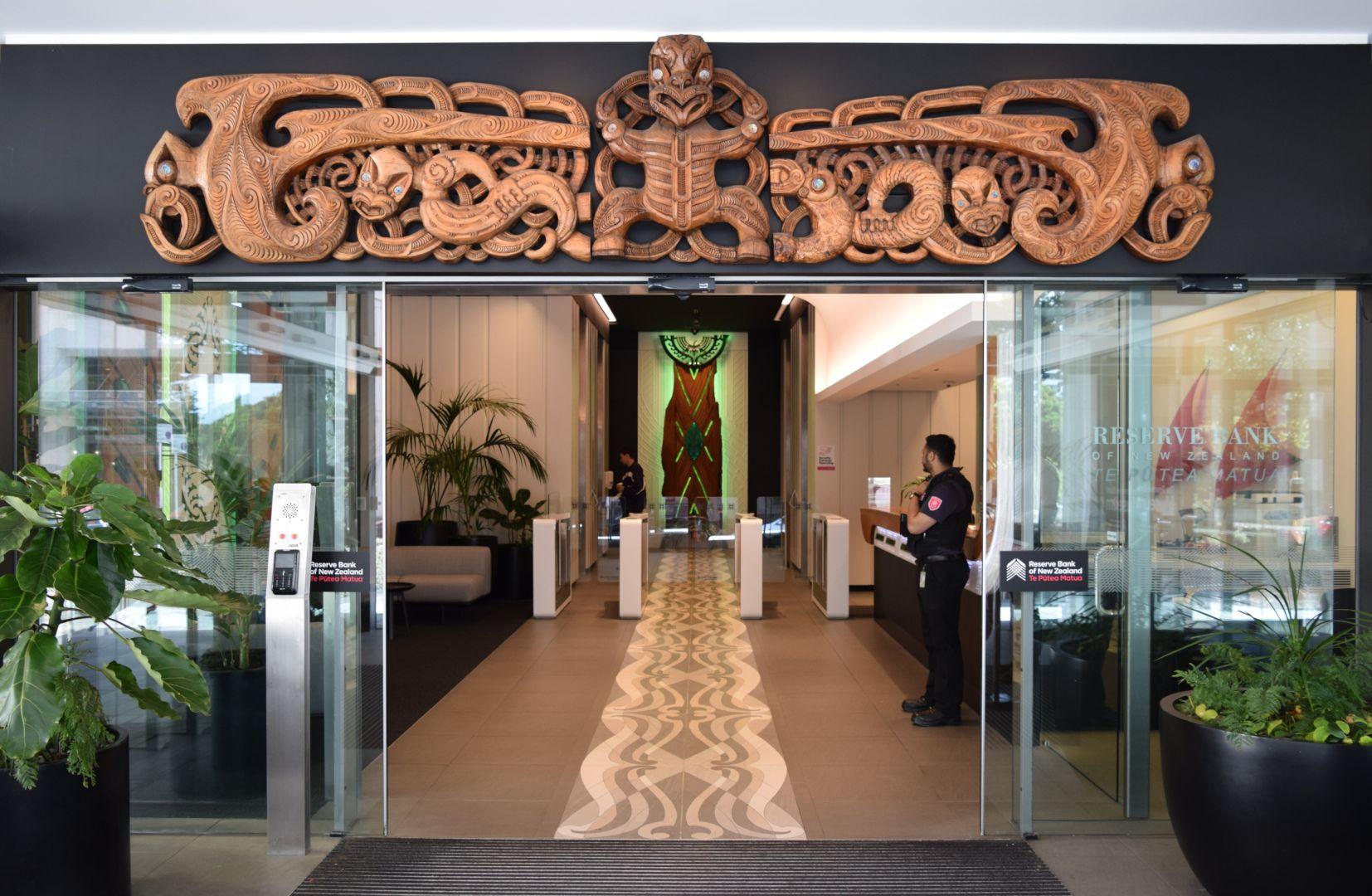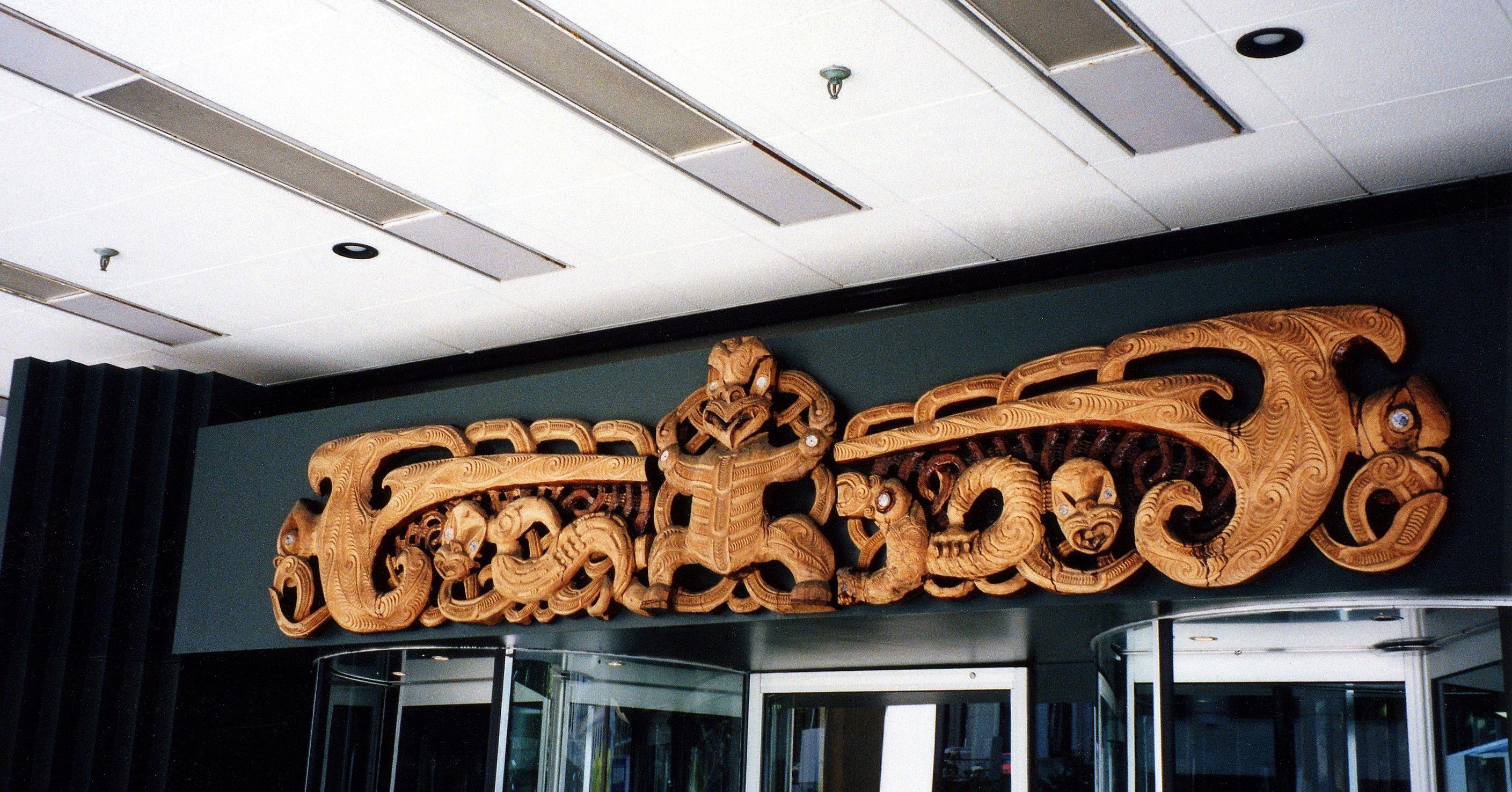PunatotoThe Life Force
Pita Rua Lagan
Type
- Whakairo
- Carving
Medium
- Wood
Dimensions
- H1100mm x W4300 x D170mm (LHS carving: H800 x W1760 X D120mm; Centre Piece: H1100 x W710 X D170mm; RHS carving: H800 x W1760 x D120mm)

Pita Rua Lagan, ‘Punatoto - The Life Force’ (1990), Reserve Bank of New Zealand, Wellington
Image: Bronwyn Holloway-Smith, Public Art Heritage Aotearoa NZ, 2024



- DETAILS
- MAP
Description
“Punatoto - The Life Force is carved in totara. It comprises two panels and a centerpiece. Timber for the centerpiece came from a swamp on the Wairau Plains, representing a link with the South Island, while that for the two panels came from Tongariro National Park.
“Picton-based Pita Rua Lagan was commissioned by Maori International Ltd to produce the carving for the Reserve Bank, as one way of commemorating the 150th anniversary of the signing of the Treaty of Waitangi in 1990. The carver's theme for Punatoto - The Life Force represents all nature's forces inter-related, in balance, and moving towards the focal point of security and comfort.
“The carving was unveiled by Dr Donald T. Brash, Governor of the Reserve Bank, on 5th October 1991. The unveiling formed part of a traditional Māori dawn ceremony.”
Source: plaque installed with the work.
–
“The carving in the entrance foyer of the Reserve Bank of New Zealand is named ‘Punatoto: The Life Force’. Punatoto was an ancestor of Te Atiawa who lived in Whanganui-A-Tara, the Maori name for Wellington harbour. Pita Rua Lagan, a Tuhoe carver from Matahi in the Urewera, currently living in Picton, was commissioned by the Bank to carve Punatoto as part of New Zealand’s commemoration of 150 years since the signing of the Treaty of Waitangi.
“The carving was originally mounted above the front entrance of the Bank and was first unveiled in October 1991. As part of the renovation of the ground floor and entrance way of the Bank in 2006, Punatoto has been cleaned and restored. Its new location between the two sets of front doors should significantly reduce sun exposure and damage to the carving from the elements and pollution.
“Punatoto is made up of three panels: a koruru and two maihi. The panels represent the inter-related, balanced forces of nature moving towards a focal point of security and comfort. Kauri for the koruru (centre panel) came from a swamp on the Wairau Plains, while kauri for the two maihi (side panels) came from Tongariro National Park.
“The central figure is Maui, a mythological hero who, according to Maori legend, fished up the North Island. Wellington is recognised by Maori as the ‘head of the fish of Maui’. The figure of Maui also represents Papatuanuku, the mother of Tane, who in Maori cosmology provided totara wood for carving from the forest of Te Wao Nui A Tane. The area above the carving represents Rangi, the Sky Father.
“The stylised figures on the top of the panels depict parirau, the wings of a bird providing ruruhau, or shelter, from Tawhirimatea, the God of the Winds. The stylised pattern immediately below is Moananui A Iwi, a sea of people converging from both sides to the central ancestor, who will provide shelter, comfort and advice. The symmetrical circular pattern represents the ceaselessness of the waves of Tangaroa, the God of the Sea.
“The sea monster, or Taniwha, depicted on each panel, is the life below Tangaroa, and identifies with local legends, such as that of the Taniwha called Hataitai, which lived in the waters of Cook Strait, or Raukawa. The end of the Taniwha represents Nga Tai E Wha, the sea tides. The extreme ends represent Toroa, the Albatross, or bird life above the sea. In-depth indentations signify moving from Te Ao Tawhito, the age of stone, into Te Ao Marama, the age of enlightenment.”
Source: Reserve Bank of New Zealand, ‘Punatoto: The Life Force’ (information sheet) published November 2007
–
The whakaairo had a second unveiling ceremony in October 2006.
